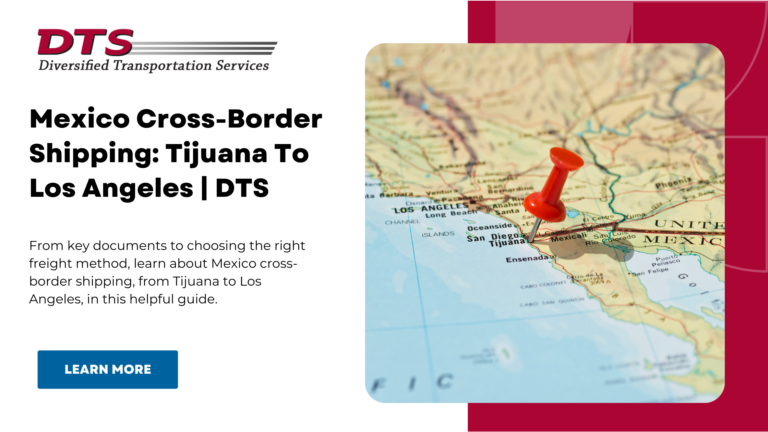Mexico cross-border shipping tips: Tijuana to Los Angeles
Cross-border shipping is a daily process for countless businesses worldwide, but it can be complicated and daunting (especially if you’re new to it.) It’s crucial to understand the do’s and don’ts of shipping between countries. Otherwise, you risk delays, disruptions, fines, and possible legal action.
If your business is looking to ship between Tijuana, Mexico, and Los Angeles, California, there are a few key points to keep in mind for a smooth process. We’ll explore these below to help you plan your Mexico cross-border shipping.
Tijuana to Los Angeles cross-border shipping basics
Tijuana is just over the US-Mexico border, making it a major commercial crossing point for individuals and goods.
Specifically, Tijuana’s Otay Mesa Port of Entry is a popular commercial crossing point between Mexico and the US. It’s the busiest commercial port in California and processes approximately 1 million commercial trucks every year.
Los Angeles is a major regional (and global) hub for shipping across California, the wider US, and other countries. Shipping companies in LA play a key role in supporting diverse industries, handling everything from consumer goods to agricultural exports.
Learn more about freight shipping in Los Angeles.
Mexico cross-border shipping tips: Tijuana to Los Angeles
Here are some helpful cross-border shipping tips for moving goods between Mexico and the US.
Have the right documents
You need several key documents for shipping across the border, including:
- Commercial invoice: This is a legal document between the shipper and the recipients used to determine the right customs duties. It should state the products shipped, their point of origin, their intended use, their value, and other essential details.
- Bill of lading (or Orden de Servicio in Mexico): A bill of lading carries vital information about a shipment, including the destination and quantity. Because this is a legally binding agreement between buyers and sellers, all parties involved in a shipment are required to follow it.
- Export pedimento: The pedimento is a customs document for all goods legally entering or leaving Mexico. This provides key information on the quantity, values, and purpose of all goods in transit.
- USMCA Certificate of Origin: The United States-Mexico-Canada Agreement (USMCA) Certificate of Origin is an optional document and only applies in certain cases. It certifies the shipment’s country of origin and enables businesses to request preferential tariff treatment.
- Registro Federal de Contribuyentes (Federal Taxpayer Registration): This document is for taxpayer registration when exporting goods from Mexico.
- Packing list: Your packing list should detail the full contents of any packages transported with Mexico cross-border shipping. It usually includes a description of the goods, shipment date, packaging type, and other important information.
For more info about the documents you need, read our post about key documents for Mexico cross-border freight.
Understand customs and duties
Navigating customs procedures correctly is a must for hassle-free cross-border shipping. Make sure you:
- Accurately classify your goods under the Harmonized Tariff Schedule (HTS) to determine duties and taxes. The HTS determines tariff rates for all goods imported into the US.
- Work with a licensed customs broker to help with compliance and avoid delays.
- Look into Mexico’s IMMEX program, which allows certain types of manufacturers to import goods duty-free on a temporary basis.
Choose the right freight mode and carrier
Picking the right freight method for your Mexico cross-border shipping can have a positive impact on costs and transit time. Here are three options to consider:
- Full truckload (FTL): Best for large shipments with a faster delivery timeline, since an entire truck is dedicated to just one shipper’s goods.
- Less-than-truckload (LTL): Best for smaller shipments that don’t need an entire truck. Instead, your goods will be allocated a specific amount of space in a truck alongside packages sent by other shippers.
- Expedited shipping: Best for time-sensitive cross-border shipments.
Plan for border wait times and delays
Since the Otay Mesa Port of Entry is one of the busiest commercial crossings, delays are common. However, you can try to mitigate wait times by:
Work with an experienced Mexico cross-border shipping provider
Working with a cross-border shipping provider is the simplest, most efficient way to transport goods between Mexico and the US. For 35 years, DTS has helped businesses move freight across borders.
To get a quote for your Mexico cross-border shipping needs, get in touch with DTS today.
